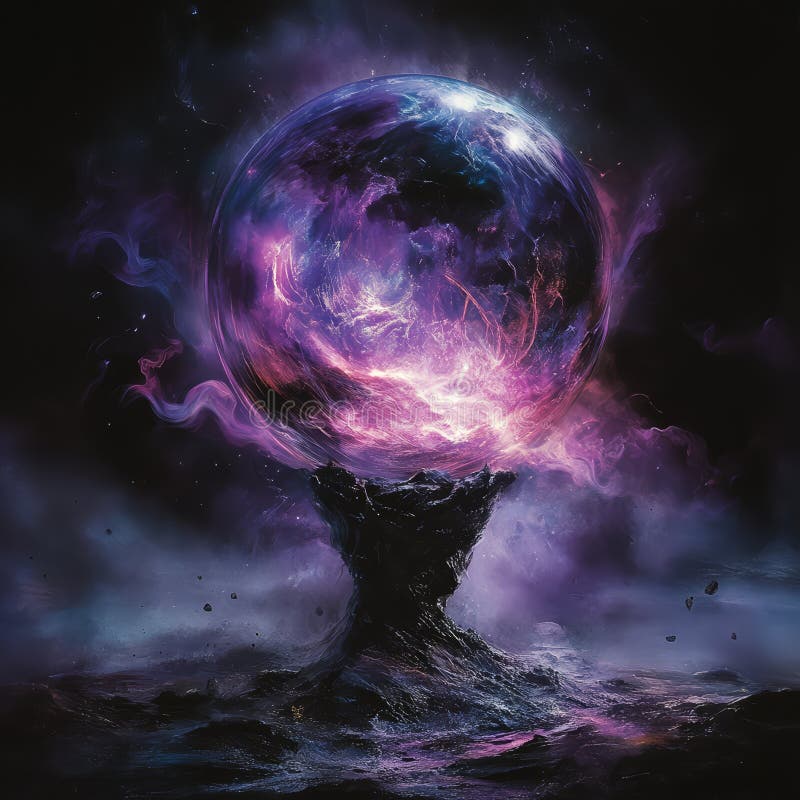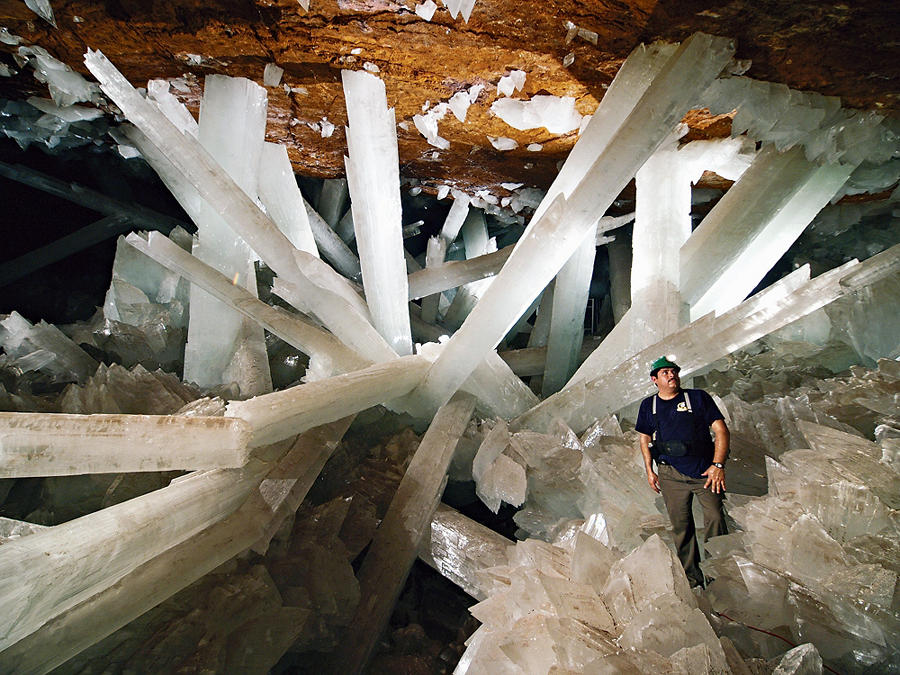Scientists Discover a 3 Million Year Old Door and Find Something Incredible Inside
We invite you on an extraordinary journey as we unveil the 15 strangest discoveries in the most unexpected places. From an incredible underwater river to a mysterious abandoned plane, prepare to witness the unbelievable. It’s so eerie—you can’t see any sign of water at all.
Number 15: The Underwater River

Beneath Mexico’s Cenote Angelita lies a phenomenon that defies imagination: an underwater river. This surreal natural wonder forms due to the interaction of water with varying densities. Think of it as a layered cake where denser water forms a distinct layer below lighter water. The presence of hydrogen sulfide, derived from decomposing organic matter, adds to the density, creating this otherworldly effect.
Unlike traditional rivers, this is not a flowing body of water but a mesmerizing, still boundary that mimics a river. Located 55 meters below the surface, divers pass through freshwater layers before encountering this surreal scene. Branches and foliage from above have descended, forming what looks like colorful riverbanks, while light filtering from above adds an ethereal glow. This rare and stunning display of nature’s artistry is proof of the unexplored beauty hidden beneath our feet.
Number 14: Abandoned Airplane in Bali

Bali, Indonesia, known for its breathtaking landscapes, harbors an unexpected sight: an abandoned Boeing 737 sitting in a field near a limestone quarry since 2007. Theories abound, with the most popular suggesting it was intended to be converted into a restaurant. Financial hurdles, however, left the project incomplete. Now, it stands as an unconventional tourist attraction.
Surprisingly, Bali has more such aircraft—one near a Dunkin’ Donuts shop and another perched on a cliff overlooking the ocean. These peculiar sites add to Bali’s unique charm, blending mystery with its already vibrant tourism scene.
Number 13: Hidden Underground Tunnels in Homes

Hidden beneath our homes, history often leaves traces of its existence. Freddy Goodall stumbled upon a network of hidden tunnels behind a bookshelf in his library. Believed to be servants’ passageways, these tunnels paint a picture of a bygone era.
Similarly, a couple in Illinois unearthed a chamber dating back to 1895 beneath their sidewalk while renovating their home. Whether used for smuggling or escape routes, these spaces serve as time capsules, connecting us to the mysteries of the past.
Number 12: Prohibition-Era Whiskey Stash

In New York, a couple renovating their historic home made an unexpected discovery: a stash of Prohibition-era whiskey. Hidden within the walls were 66 bottles, some still intact. These relics of a notorious bootlegger’s past could be worth up to $1,000 per bottle, making this not just a fascinating historical find but also a potentially lucrative one.
Number 11: The Nika Crystal Cave
In 2000, miners in Naica, Mexico, stumbled upon a breathtaking wonder: the Nika Crystal Cave, filled with massive gypsum crystals. These translucent formations, some over 25 feet long, formed under extreme heat and were preserved in water. Though inaccessible now due to flooding, this stunning natural marvel remains one of Earth’s hidden treasures.
Number 10: Hidden Treasure Under the Sewing Machine

When Carl lifted the cover of an old sewing machine at his late grandmother’s request, he uncovered a hidden Pablo Picasso painting. Though not an original masterpiece, the artwork was valued at $13 million, proving treasures can hide in the most unexpected places.
Number 9: Shipwreck Beneath the Sand

After Hurricane Nicole shifted Florida’s sandy beaches, a 19th-century shipwreck emerged. Measuring 20 feet, the remnants sparked excitement among historians, offering a glimpse into maritime history and the mysteries of the past.
Number 8: Enigmatic Purple Spheres

In 2013, shimmering purple orbs were discovered in the Arizona desert. Their jelly-like texture and unknown origins left scientists puzzled. Could they be biological growths, or something extraterrestrial? Their sudden disappearance only deepens the mystery.
Fancy Topic: The 3-Million-Year-Old Door

Deep within a South American cave, scientists unearthed a 3-million-year-old door with an ornate, metallic frame. Behind it lay a portal-like structure radiating energy. When activated, figures—both human and alien—emerged, leaving researchers awestruck. Could this ancient technology reshape humanity’s understanding of its past and future?
Topic number seven: the Gates to Hell.

Deep in the heart of Turkmenistan’s Karakum Desert lies an extraordinary natural feature that has captured the imagination of all who encounter it. Known as the Gates of Hell, this fiery crater resembles something out of a fantasy tale. However, despite its intense flames, it is not a result of volcanic activity. Instead, the fire was ignited by a vast underground natural gas reserve that has been burning continuously for decades. The story of this unusual site dates back to 1971 when Soviet geologists were drilling for oil in the desert. During their work, they accidentally tapped into a large natural gas pocket, causing the ground to collapse and form a massive sinkhole about 60 meters wide and 35 meters long. To prevent the hazardous methane gas from leaking into the air, the scientists decided to set the pit on fire, expecting it to burn out in a few days. Yet, the fire has been burning ever since. The origin of this strange phenomenon remains surrounded by mystery, sparking various theories. Some claim it’s a portal to Hell, while others speculate it might have been a secret weapon testing site. Regardless of its origin, the Gates to Hell has become an unexpected tourist attraction, drawing thousands of visitors each year. This extraordinary natural wonder has been aflame for decades, with no signs of extinguishing anytime soon.
Number six: Underwater Trains. Trains are typically associated with tracks across the land, but what if we told you some have ended up deep in the ocean? Off the coast of New Jersey, two Civil War-era trains were discovered submerged at a depth of 90 meters. These enormous locomotives, dating back to the 1850s, raise many questions about how they ended up underwater, though details remain scarce. Some suggest these trains were part of an older transport system that met a mysterious fate. In another remarkable discovery, a Russian YouTuber filmed a submerged train found in a body of water during a diving expedition. The theory behind this discovery is that the train had derailed from a bridge and plunged into the water below. To add to the intrigue, underwater recovery expert Tom Crossman and his team used advanced sonar technology to locate another lost train, dating back over a century. The concept of submerged trains is fascinating because trains are designed for land travel, and it’s striking to think of them trapped beneath the waves, becoming part of the ocean’s hidden history. Each discovery like this reminds us just how unpredictable the past can be and how much remains hidden beneath the surface.
Number five: Ships in the Desert.
 Once a bustling port city on the shores of the Aral Sea, Muynak now lies deserted—a shell of its former self. In the 1960s, Muynak was home to over 40,000 people and served as a hub for fishing and trade. However, due to the Soviet Union’s environmental intervention, water from the Aral Sea was diverted for irrigation, causing the sea’s water volume to plummet by 90% over the next four decades. This environmental catastrophe devastated the ecosystem and turned Muynak into a ghost town. One of the most haunting remnants of this tragedy is the sight of ships abandoned in the desert. These rusting vessels, once used for trade and fishing, now sit stranded far from any water, serving as stark symbols of the town’s collapse. They stand as a powerful reminder of the damage human intervention can cause to nature, warning us about the potential fate of other water-dependent regions facing climate change and poor resource management.
Once a bustling port city on the shores of the Aral Sea, Muynak now lies deserted—a shell of its former self. In the 1960s, Muynak was home to over 40,000 people and served as a hub for fishing and trade. However, due to the Soviet Union’s environmental intervention, water from the Aral Sea was diverted for irrigation, causing the sea’s water volume to plummet by 90% over the next four decades. This environmental catastrophe devastated the ecosystem and turned Muynak into a ghost town. One of the most haunting remnants of this tragedy is the sight of ships abandoned in the desert. These rusting vessels, once used for trade and fishing, now sit stranded far from any water, serving as stark symbols of the town’s collapse. They stand as a powerful reminder of the damage human intervention can cause to nature, warning us about the potential fate of other water-dependent regions facing climate change and poor resource management.
Number four: The Lyus Cup. The Lyus Cup, an extraordinary 600-year-old Roman artifact, is a marvel of ancient craftsmanship. At first glance, it may seem like a jade green goblet, but when illuminated from behind, it dramatically changes color, turning a deep, rich red. This remarkable transformation occurs due to gold nanoparticles embedded in the glass—a feature that scientists would only come to understand in the 21st century. Discovered in the 18th century, the cup is believed to have been crafted between 290 and 325 AD, and its design tells the myth of King Lyrus, who sought to harm the follower Ambrosia but met his demise as she transformed into a vine. The color-shifting phenomenon, known as deism, reveals the advanced understanding of materials possessed by the Romans, possibly even before the concept of nanotechnology. When researchers used electron microscopes in 1990, they uncovered the gold nanoparticles responsible for the color change, demonstrating that the creators of the Lyus Cup were ahead of their time. This artifact continues to captivate and puzzle researchers, serving as a testament to human ingenuity.
Number three: House Full of Snakes.
 In India, snakes hold great spiritual significance, especially in Hindu culture, where they are revered as sacred beings. Every year, during the Nag Panchami Festival, communities gather to honor and worship these majestic creatures, offering food and seeking blessings. However, for one family in Pune, Maharashtra, their reverence for snakes turned into an overwhelming and somewhat terrifying experience. The family discovered that their home had become a haven for numerous snakes, including cobras and kraits, which slithered through their rooms, kitchens, and even along the walls and ceiling. At first, the family thought it was a minor issue, but soon it became a full-blown infestation. Interestingly, this is not an isolated incident in Pune, where cobras are commonly found in many homes. The villagers do not fear these creatures but treat them with respect, allowing them to roam freely as part of a long-standing cultural practice. The unusual relationship between humans and snakes in this community symbolizes a deep connection between the natural world and spirituality, celebrating the presence of snakes as divine creatures and honorary family members.
In India, snakes hold great spiritual significance, especially in Hindu culture, where they are revered as sacred beings. Every year, during the Nag Panchami Festival, communities gather to honor and worship these majestic creatures, offering food and seeking blessings. However, for one family in Pune, Maharashtra, their reverence for snakes turned into an overwhelming and somewhat terrifying experience. The family discovered that their home had become a haven for numerous snakes, including cobras and kraits, which slithered through their rooms, kitchens, and even along the walls and ceiling. At first, the family thought it was a minor issue, but soon it became a full-blown infestation. Interestingly, this is not an isolated incident in Pune, where cobras are commonly found in many homes. The villagers do not fear these creatures but treat them with respect, allowing them to roam freely as part of a long-standing cultural practice. The unusual relationship between humans and snakes in this community symbolizes a deep connection between the natural world and spirituality, celebrating the presence of snakes as divine creatures and honorary family members.
Number two: Forest Finn’s Treasure.
/https://tf-cmsv2-smithsonianmag-media.s3.amazonaws.com/filer_public/cc/2a/cc2a4550-b5bf-497f-bb3e-63c439200d2a/heritageauctions_fenn_treasure_01.jpg)
In 2010, Forest Finn, a wealthy art collector, piqued the interest of treasure hunters around the world by revealing that he had hidden a chest filled with gold and precious artifacts somewhere in the mountains of New Mexico. For years, this treasure remained elusive, as adventurers followed a trail of riddles and clues. Then, in 2019, the treasure was finally found in the rugged terrain near Red Mountain Pass in Colorado. The location had been buried under a thick layer of snow for weeks, making it impossible to access until Denny Badunk, a snowplow driver, stumbled upon the chest while clearing the snow. Inside the chest, Badunk found not only valuable treasures but also a signed manuscript by Forest Finn himself, hidden beneath a Neil Diamond CD. This discovery added a new chapter to the legend of Finn, further cementing his place in treasure hunting history.
Number one: Ancient Roman Mosaic.

In northern Italy’s picturesque countryside, an archaeological discovery has shed new light on the grandeur of ancient Rome. Experts conducting a survey uncovered a beautifully preserved Roman mosaic beneath a vineyard just north of Verona. The mosaic, once part of a luxurious Roman villa, had been hidden under several meters of earth for over two millennia. As the soil was carefully removed, the intricate designs of the mosaic emerged, offering a glimpse into the artistic sophistication of the Romans. This discovery is significant not only for its artistic beauty but also because it connects to a Roman villa whose ruins were first discovered over a century ago. The vibrant patterns of the mosaic tell us about the lifestyle of the Roman elite and their opulent culture. Archaeologists, in collaboration with local authorities, are working to carefully excavate and preserve the mosaic and the villa’s foundations for future study and public display. This remarkable find serves as a reminder that history is often hidden beneath our feet, waiting for the right moment to be uncovered.









